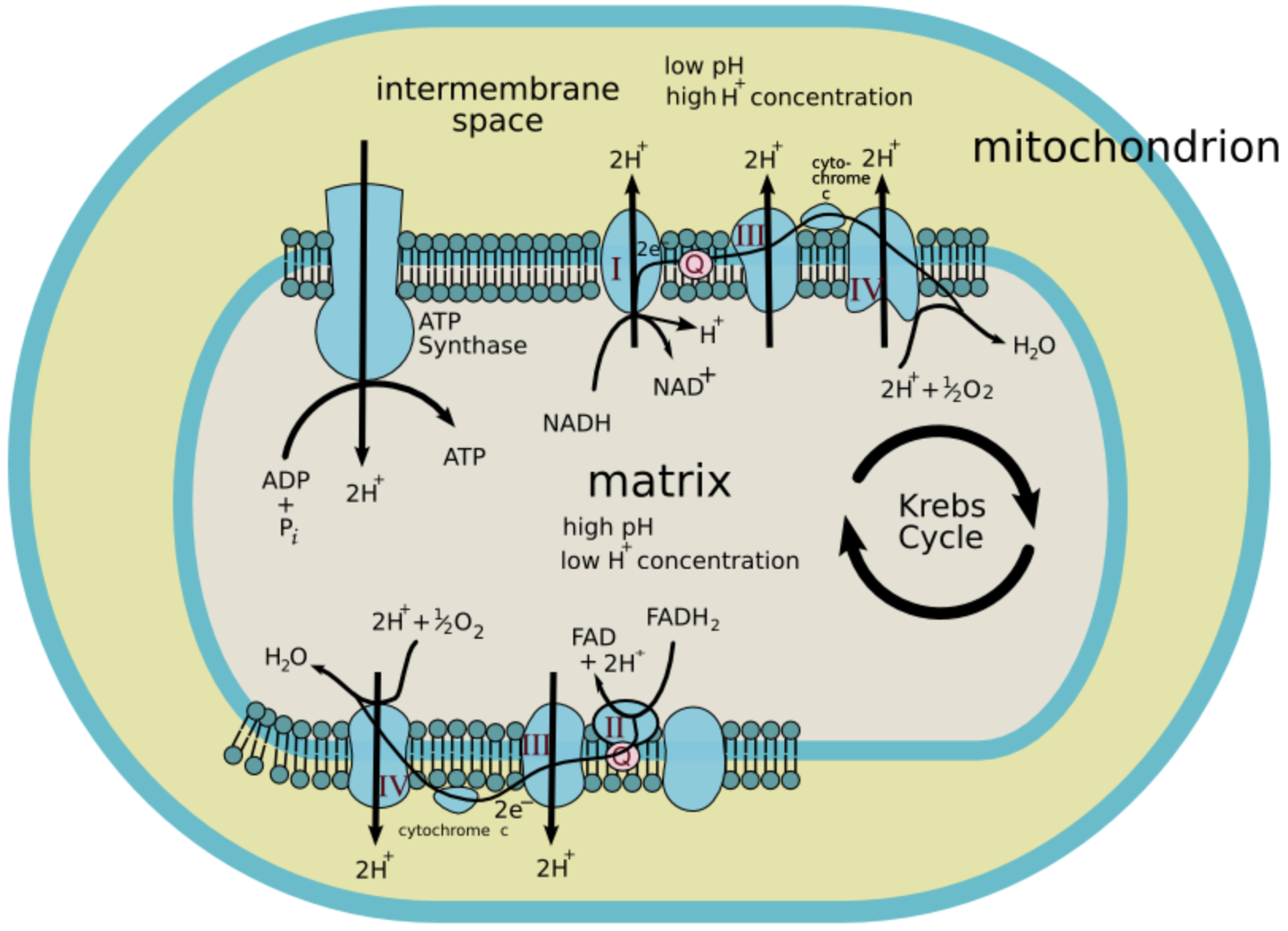
Krebs cycle takes place in
A. Vesicles of E. R
B. Mitochondria
C. Dictyosomes
D. Chloroplasts
Answer
470.4k+ views
Hint: The cycle occurs in a cell organelle which is called the powerhouse of the cell, where energy is produced.
Complete answer:
The Krebs cycle is also known as the citric acid cycle (CAC) or the tricarboxylic acid cycle (TCA cycle). It takes place in the mitochondrial matrix of the eukaryotic cells.
It is a series of chemical reactions used by all aerobic organisms to release stored energy through the oxidation of acetyl Co-A derived from carbohydrates, proteins, and fats.
The reaction of the TCA cycle is carried out by eight enzymes that completely oxidize acetate in the form of two acetyls Co-A.

The pyruvate formed by the reduction of glucose in the glycolysis is broken into acetyl-CoA which enters the Krebs cycle and condenses with oxaloacetate to form citrate.
One pyruvate molecule produces 15 ATP and two pyruvate molecules lead to the production of 30 ATP.
The Krebs cycle takes place in the mitochondria most due to its historic past as it is believed that the mitochondria have an origin of an independent, energy-producing organism, which was taken as a means for the energy exchange.
In prokaryotic cells, the citric acid cycle takes place in the cytosol instead of the inner membrane of the mitochondria because these cells lack mitochondria.
So, the correct answer is ‘B. Mitochondria’.
Note: Several components and reactions of the citric acid cycle were established in the 1930s by the research of Albert Szent-Gyorgyi, who received a Nobel Prize in Physiology or Medicine in 1937 for his discovery of fumaric acid, a key component of the cycle.
Complete answer:
The Krebs cycle is also known as the citric acid cycle (CAC) or the tricarboxylic acid cycle (TCA cycle). It takes place in the mitochondrial matrix of the eukaryotic cells.
It is a series of chemical reactions used by all aerobic organisms to release stored energy through the oxidation of acetyl Co-A derived from carbohydrates, proteins, and fats.
The reaction of the TCA cycle is carried out by eight enzymes that completely oxidize acetate in the form of two acetyls Co-A.

The pyruvate formed by the reduction of glucose in the glycolysis is broken into acetyl-CoA which enters the Krebs cycle and condenses with oxaloacetate to form citrate.
One pyruvate molecule produces 15 ATP and two pyruvate molecules lead to the production of 30 ATP.
The Krebs cycle takes place in the mitochondria most due to its historic past as it is believed that the mitochondria have an origin of an independent, energy-producing organism, which was taken as a means for the energy exchange.
In prokaryotic cells, the citric acid cycle takes place in the cytosol instead of the inner membrane of the mitochondria because these cells lack mitochondria.
So, the correct answer is ‘B. Mitochondria’.
Note: Several components and reactions of the citric acid cycle were established in the 1930s by the research of Albert Szent-Gyorgyi, who received a Nobel Prize in Physiology or Medicine in 1937 for his discovery of fumaric acid, a key component of the cycle.
Recently Updated Pages
Master Class 11 English: Engaging Questions & Answers for Success

Master Class 11 Computer Science: Engaging Questions & Answers for Success

Master Class 11 Maths: Engaging Questions & Answers for Success

Master Class 11 Social Science: Engaging Questions & Answers for Success

Master Class 11 Economics: Engaging Questions & Answers for Success

Master Class 11 Business Studies: Engaging Questions & Answers for Success

Trending doubts
10 examples of friction in our daily life

What problem did Carter face when he reached the mummy class 11 english CBSE

One Metric ton is equal to kg A 10000 B 1000 C 100 class 11 physics CBSE

Difference Between Prokaryotic Cells and Eukaryotic Cells

State and prove Bernoullis theorem class 11 physics CBSE

The sequence of spore production in Puccinia wheat class 11 biology CBSE




